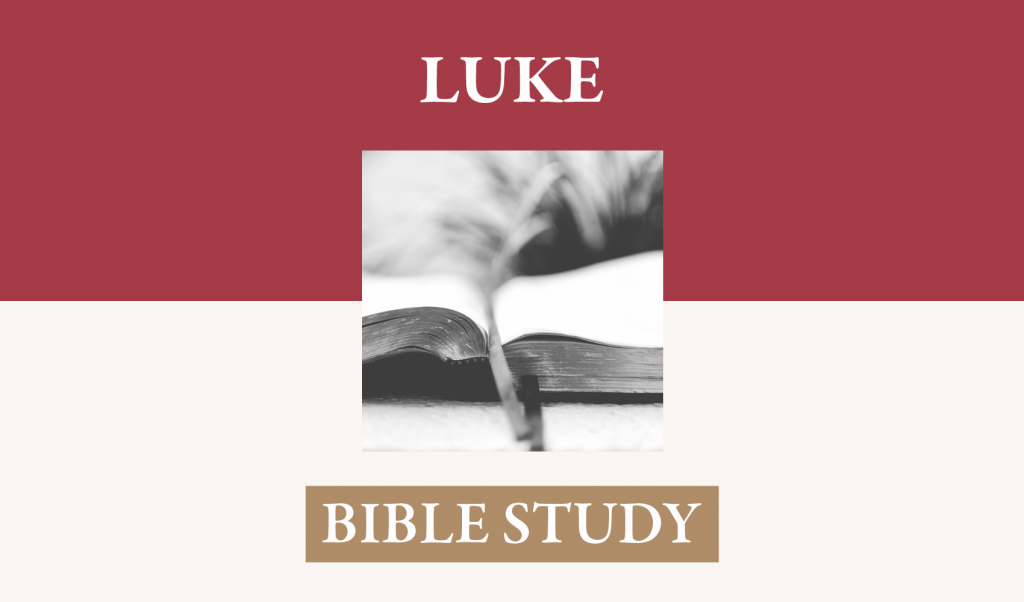In the immediately preceding context, Jesus has given urgent exhortation supported by graphic illustration that one must always be ready for the consummation of the Kingdom of God through the glorious return of the Son of Man. Jesus already had inaugurated his kingdom (17:21 –“The kingdom of God is in your midst”) by invoking repentance, faith, and gratitude. His work has been with the lowly and the few and must be sealed by his utter rejection by the mighty and the many. This rejection provides the occasion for his decreed substitutionary death (17:25 – “He must suffer many things”). Christ’s coming in glory will occur without preceding warning and be welcomed only by those whose lives day by day cherish the hope of his coming [17:22-37; cf. 1 Thess 1:10; 5:1-11, 23, 24; 2 Thess 1:1-10]
- Times of distress will make Christians long for “one of the days of the Son of Man;” They desire his presence, whether in that present state of humiliation or the glory of Christ’s return (22). “Son of Man” is used in 22, 24, 26, 30. Jesus used this image to refer to Daniel 7:13, 14 concerning the eventual eternality of his rule over the nations as he came near to the Ancient of Days to receive dominion. Compare this to Revelation 5:1-10.
- None, however, can point out that time of his return or show the signs of it 17:23, 24. No one will have to point out that the Son of Man comes, for it will be as obvious and as palpably conclusive as a flash of lightning that covers the sky.
- This present appearance in humiliation of the Son of Man must end in his death and rejection (17:25). For his rule as the Redeemer-King, the death was necessary. He could rule in sovereign might and judgment with an unchallengeable eternal manifestation of holy righteousness, but the display of sovereign mercy and invincible grace would be absent.
- His coming in glory will be sudden, interrupting the flow of everyday life – 26-30. Some build a case that this refers to the coming of judgment in the destruction of the temple in Jerusalem in 70 AD; If this interpretation is correct-and it could be-this would end the Mosaic age and begin the Messianic/gospel age culminating in the glorious appearing of the Lord Jesus (Titus 2:13; 1 John 3:2).
- His coming will seal the eternal state of all living in the same way that death has sealed the state of who have died before [recall the rich man and Lazarus] (31 ff).
- Three times [17:25, 26, 30] Jesus points to his glorious return. He uses “day” twice [24, 30] to refer to the moment of his glorious appearing and the plural “days” [26] once to refer to the span of time in this present age from the destruction of Jerusalem to his sudden appearing.
- When the disciples ask “Where, Lord?” Jesus used a vivid image of a phenomenon of nature, vultures gathering around a corpse, to show that those whose earnest expectation and hope centers on the glory of Christ will be immediately drawn to him at his glorious return. As the carrion-eaters know the smell of carrion and fly to the feast, so the lovers of Christ will delight in his glorious appearing and not “shrink from him at his coming” (1 John 2: 28; 4:17).
- Now the unasked question that Jesus answers in the next chapter is, “What are the characteristics of those that will delight to be gathered to him at his coming?”
I. Be assured of Justice for the Elect Luke 17: 1-8
A. The Parable of the unjust judge
- Jesus obviously was a master of parables that served to give barbs to spiritual truth. He could use perfect illustrations for he knew both heaven and earth perfectly. His projection of the analogous nature of earthly things, events, and relationships to their heavenly counterpart could never be duplicated by any other teacher. This parable is one to be seen as gaining its power through reverse proportions.
- Luke tells us that it about the persistence in prayer that is necessary for a faithful life and right perspective on justice in a fallen world.
- A judge who is unjust, has no fear of God, and has no respect for people, nevertheless relents and gives justice to a widow who is persistent in demanding that he rule rightly in her case.
B. Jesus will bring about justice for his elect. If an unloving and unjust man will respond to the badgering of a desperate woman, how much more will the God who chose us before the foundation of the world and sent his Son to die in our stead be propitious toward the very people for whom he already has given infinite favor? We may be sure that our prayers always ring in his ears and he loves the requests of his people who recognize their dependence on him for every good.. “He will swiftly grant them justice.”
C. True faith, however, is rare “When the Son of Man comes,” that is, comes for final judgment and the reception and acquittal of his elect, how rare will true saving faith be? Jesus is not wondering if he will find it—he is sure that he will find it for he has determined that it will be so. But pretensions to faith rather than real dependence on the redemptive work of Christ will be unveiled in abundance when the secrets of men’s hearts are laid bare.
II. A Mark of true faith is that one mourns his unrighteousness. Conversely, one that approves of himself as a candidate for heaven on the basis of his own goodness is deceived (9-14). Again, Luke tells us the point of the parable: “to some who trusted in themselves that they were righteous and looked down on everyone else.”
A. A great danger lies in comparing our lives with those we consider worse than we are (9-11).
- Jesus purposefully gave a stark contrast between two individuals in order to make clear one element of the kind of faith that will not really be faith as opposed to an element of the faith that is true faith.
- One, the Pharisee, was punctilious in external conformity to a code of conduct that had been composed around the law in order to give a manageable measure of one’s obedience. The pharisee gave an evaluation of himself before God coming out with an A+ on the scorecard of avoiding moral culpability.
B. A great danger lies in thinking that performance of religious activities fits us for heaven. Not only had he avoided the most egregious manifestations of unrighteousness, he had performed required duties for a positive righteousness, periodic fasting and giving a tithe “of everything I get.” False faith is deeply flawed in its evaluation of one’s freedom from iniquity as well as one’s performance of true righteousness.
C. True knowledge of self involves no comparison with others but isolation of self before God’s character (13).
- The publican knew he was in the presence of God but would not so much as grant himself the right to look heavenward. He could not escape either the presence or the holy reality of divine omniscience.
- He had come to a point of genuine self-loathing for the constant stream of dishonor that his life manifest before God. He struck his chest in a symbolic way of demonstrating that he knew his sin lay deep within him. No human effort could remove it; his perversity in the face of God’s law was so entwined in his being that he could not force it out.
- His call to God indicated the true depth of two things: One, God’s acceptance of him would be based on an event of propitiation. The word for “Have mercy,” includes the root of “propitiation,” which denotes the satisfaction of wrath through sacrifice. Two, he isolates himself as having within him every evil thing that sin has done to humanity and to defy the authority and honor of God. He called himself, “the sinner.”
D. Jesus identified one of these as having true faith by which he was justified rather than the other. When the Son of Man comes, in one of these he will find faith, but in the other he will not find faith. There is no salvation is self-exaltation but only condemnation. To be exalted by humility means to be received in a justified state, adopted as a son of God, given the earnest of the Spirit, and preserved until finally glorified in the presence of God and the holy angels.
III. A mark of true faith is that one is unvarnished in his trust and humility (15-17).
A. This event contrasts with the parable by focusing on those who have no social pretensions at all. Jesus does not say that children, even infants, are not sinful having escaped the common corruption of mankind. When the disciples seek to prohibit the children from coming, or their parents from bringing them, Jesus insists on receiving them. In them and their lack of having developed vain self-consciousness, Jesus highlighted the freeness with which a convinced sinner should come to Christ. Seeing his kindness removed any fear of his rejection. They came, both parents and little ones, as a type of faith confident of open arms because of his gracious work and promise.
B. It points to the trait of weakness and the necessity of being brought by another. The word translated “infant” on occasion is used for the “infant in the womb,” an unborn child. These, at least some of them, were unable to come on their own, but must be brought by another. Even so, when we come to God, we are brought by Christ in his atoning work and by the Holy Spirit in giving life to our dead souls. “For Christ also suffered once for sins, the just for the unjust, that He might bring us to God” (1 Peter 3:18); “elect according to the foreknowledge of God the Father, in sanctification of the Spirit, for obedience and sprinkling of the blood of Jesus Christ” (1 Peter 1:2).
C. It does not establish an ordinance or justify infant baptism. Jesus used this occasion as an example of his receiving the helpless, and unpretentious. He does not say the kingdom of God is composed of “these,” but of those who are this sort—unboastful, unafraid, completely reliant on the work of another.
IV. A mark of True Faith is that one knows that the Law condemns him and that he sees the infinite riches of eternal life compared to the whole world (18-27).
A. He knew the law but thought he had kept it. “All these I have kept!” Again, we find the question of eternal life related directly to the Law (cf. 10: 25-37).
B. He failed to see the covetousness of his life. “Sell all; distribute to the poor and have treasure in heaven, follow me. He went away sad, for he was extremely rich.”
C. He desired his wealth more than he desired eternal life. In grace, Jesus issued the answer to his question. “Follow me to Jerusalem and see the work of redemption.” He did not desire eternal life enough to surrender the comforts of temporal and temporary life.
D. Earthly riches are deceptive and a great hindrance to true faith. “Easier for a camel . . . than for a rich man.” When riches hide our sense of guilt before God’s Law and earthly glory seems more real than the glory of God, the gospel seems to be more of an imposition than a redemption.
V. Another mark of true faith is that one values the kingdom of God above all things 28-30
A. By God’s grace of effectual calling (“The things that are impossible with people are possible with God.”), some will leave earthly possessions and relations for the sake of the kingdom. To the degree possible we should nurture all earthly relations for Christ’s sake (Colossians 3:18-24) and use every material gain for God’s purposes (1 Timothy 6:17-19). When any, however, becomes a snare and with purpose draws one away from eternal life, the time for ultimate loyalty has come (1 Corinthians 7: 12-16).
B. They will receive an abundance more in their relations in the kingdom. Brothers, sisters, mothers, fathers, children will multiply in the household of God and the inheritance, “incorruptible and undefiled, reserved in heaven” for those “who are kept by the power of God through faith for salvation ready to be revealed in the last time,” will make earthly riches seem to be darkness.
VI. True Faith finds its object of trust in the passion of Christ (31-34).
A. Jesus calls to mind that the Scripture requires his death. “Everything written through the prophets about the Son of Man will be accomplished.”
B. The disciples still do not grasp the significance of this. Jesus went into detail about the specific physical things that would occur in Jerusalem, yet, in absence of the enlightenment of the Holy Spirit to grasp the burden of the words concerning the suffering of the Messiah, “they understood none of this.
C. By the opening of their understanding, the apostles came to see that the prophets wrote of “the sufferings of Christ and the glories that would follow” (1 Peter 1:11).
VII. Another mark of true faith is that one cannot be deterred from coming to Christ 35-43
A. A blind man has no way to misapprehend his debility. Unlike the rich man whose wealth is a comfort to him but a fatal hindrance to eternal life, the blind man has no delusion about his helplessness. He is blind and cannot will himself to see. We are dead in sins and cannot give life to ourselves.
B. When a blind man finds that there is hope (“Jesus of Nazareth is passing by”) for sight, nothing is more important. Does he want to cling to his blindness as the rich man clung to his riches? Blindness is a picture of absolute conviction.
C. Social pressure and scorn mean nothing to a blind man who knows that healing is within reach. Neither the implication that he is rude nor the forcefulness of crowd pressure to remain quiet can stop his cry for help. To whom shall he go if he wants to see? To whom shall we go for eternal life?
D. This blind man trusted not just Jesus’ healing powers but submitted to his majesty and lordship.
- Having heard of Jesus and his words and works, the blind man concluded that he was the fulfillment of the covenant to David—he was Messiah.
- He knew that the act of healing would not be his due, but an act of mercy.
- He knew that Jesus could do the impossible; by his words, “Receive your sight,” it would be done.
- In all of this, Jesus saw the desperate insistence of saving faith. We come to Christ when we are desperately insistent on receiving the gift that only he can give: forgiveness of sin, cleansing from sin, perfect righteousness, and the hope of eternal life.




















